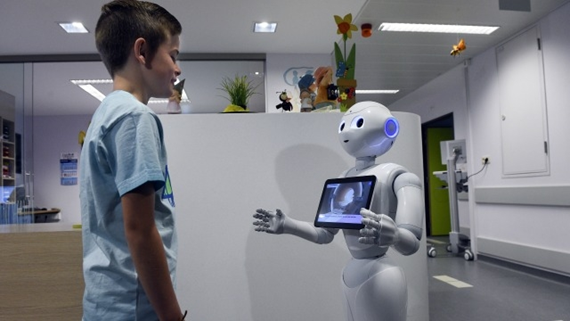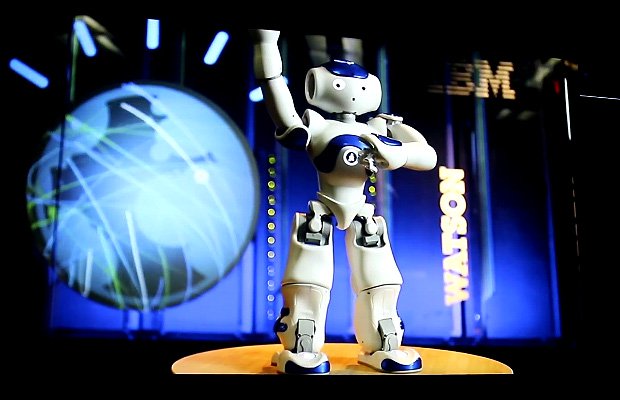5/5 (2) The problems in the German medical treatment industry are multifarious (Müller, 2018). Besides having unnecessary and badly executed medical treatments, medicine is costly (Tautz, 2018) and people from the countryside are suffering from a decreasing number of medical care due to the rural exodus of many doctors (Kölsch, 2018). For example, Mecklenburg-Vorpommern has a need for doctoral replacement of around 25% because of the previously mentioned reasons (Korzilius, 2008). Nonetheless, not only the countryside is suffering from an undersupply of doctors as 52 000 doctors are expected to retire in Germany until 2020 (DAZ, 2010), but also hospitals are missing 80 000 caregivers currently (Heine, 2018). Furthermore, the absence of IT-networks or standards for data transfer (Banse, 2018) are fundamental reasons for inefficiencies and a poor allocation of resources in the Germany medical treatment industry (SVZ, 2017).
However, change drivers such as the technological development, digitization and new customer needs could potentially enable an enhanced medical treatment in the future (Gerst, 2015). First, the E-Health trend impacts the interaction between patient and service provider and simplifies the self-management of the patient via (mobile) health applications (Wicks, 2014). Secondly, technological developments such as the advancements in big data analysis, self-learning AI deep learning algorithms or the digitization in general allow an improvement in the analysis of patient data, better forecasts, prevention of upcoming illnesses and a rectified interconnectivity between the stakeholders in the medical treatment field (Ehneß, 2018). Additionally, the technological development also offers advancements on the hardware side. For example, hyperloop systems or drones could potentially allow a different medical treatment infrastructure (Rosser, 2018). Last but not least, biotechnical developments in genetic manipulation (Miller, 2018) or in reproduction of organs could facilitate a lifesaving opportunity for patients (Wallace, 2018).
In the following part I will elaborate on my vision for the medical treatment in Germany in the year 2050. In order to empower a vital discussion, I would be keen on knowing if you can identify with my vision of medical treatment in the year 2050. Ask yourself, if ethical aspects such as morality or freedom are considered.
1. Home (-station) treatment
The HomeStation is an interactive diagnostic and robotic system for home use. It can take over general medical tasks, replaces or supports nursing staff and thus guarantees 24/7 medical care. Part of that home treatment is the use of wearables, for example electronic medical tattoos or sensors, which are on the one hand able to measure data regarding blood sugar, respiratory rate etc. (Kraft, 2019) and are on the other hand able to transmit that data to the relevant device or doctor. The role of the doctor will be taken by a robot (Yasa, 2018) who will consult the patient based on 24/7 tracked data. In addition, the robot performs minor medical treatments such as blood sampling or vaccinations. Finally, a 3D-printers ensures an immediate supply of medication, prevents drug abuse and provides better drug treatment through networking with other systems (Soleil, 2019).
2. Stationary care
Stationary care includes supra regional hubs, local hospitals and hubs of expertise for special medical fields. These are connected via drones and an underground network of hyperloops to ensure a fast and efficient treatment of every patient, independent of the location of the patient. Treatment at the surgery will be performed by surgical robots (Crawford, 2016), which are more precise, faster and risk-free. Therefore, badly executed medical treatments can be avoided. Additionally, due to the development in biotech, new organs can be delivered on demand and personalized (Pollack, 2018). A further benefit of the advancements in biotech is the prenatal and postnatal repair of severe genetic defects through genetic manipulation (Sakuma and Yamamoto, 2018).
By using this vision as a guiding principle, the medical treatment industry improves in terms of interconnectivity, flexibility, resource allocation, quality, costs and equality of treatment. Nevertheless, the risks are ubiquitous as there are side and ethical effects of genetic manipulation, as well as a reduction of human individuality by using robots. Therefore, the question arises if humankind should detach itself from its natural state and “design” people by reproducing organs? I am really looking forward hearing your opinion on this very relevant topic.
References:
Banse, P. (2018) Digitalisierung der Medizin – Das deutsche Gesundheitswesen ist zu wenig vernetzt. Available at: https://www.deutschlandfunkkultur.de/digitalisierung-der-medizin-das-deutsche-gesundheitswesen.976.de.html?dram:article_id=413494 (Accessed: 5 October 2019).
Crawford, M. (2016) Top 6 Robotic Applications in Medicine – ASME. Available at: https://www.asme.org/topics-resources/content/top-6-robotic-applications-in-medicine (Accessed: 5 October 2019).
DAZ (2010) Neue Studie zum Ärztemangel: Knapp 52.000 Ärzte gehen bis 2020 in Ruhestand. Available at: https://www.deutsche-apotheker-zeitung.de/news/artikel/2010/09/03/knapp-52-000-aerzte-gehen-bis-2020-in-ruhestand (Accessed: 5 October 2019).
Ehneß, S. (2019) Wie sieht die Medizin der Zukunft aus? Available at: https://www.healthcare-computing.de/wie-sieht-die-medizin-der-zukunft-aus-a-833099/ (Accessed: 5 October 2019).
Gerst, T. (2015) Zukunft der Medizin: Trendstudie will den Weg weisen. Available at: https://www.aerzteblatt.de/archiv/171346/Zukunft-der-Medizin-Trendstudie-will-den-Weg-weisen (Accessed: 5 October 2019).
Heine, H. (2018) Personalmangel in Krankenhäusern: 35,7 Millionen Überstunden – Politik – Tagesspiegel. Available at: https://www.tagesspiegel.de/politik/personalmangel-in-krankenhaeusern-35-7-millionen-ueberstunden/22706004.html (Accessed: 5 October 2019).
Kölsch, T. (2018) Medizinischer Nachwuchs: Landflucht und Landarzt-Mangel. Available at: https://www.general-anzeiger-bonn.de/ratgeber/fit-und-gesund/landflucht-und-landarzt-mangel_aid-43810019 (Accessed: 5 October 2019).
Korzilius, H. (2008) Hausärztemangel in Deutschland: Die große Landflucht. Available at: https://www.aerzteblatt.de/archiv/59015/Hausaerztemangel-in-Deutschland-Die-grosse-Landflucht (Accessed: 5 October 2019).
Kraft, D. (2019) 12 innovations that will revolutionize the future of medicine, National Geographic magazine. Available at: https://www.nationalgeographic.com/magazine/2019/01/12-innovations-technology-revolutionize-future-medicine (Accessed: 5 October 2019).
Miller, J. (2018) The Future of Medicine. Available at: https://hms.harvard.edu/news/future-medicine (Accessed: 5 October 2019).
Müller, T. (2018) Gesundheitssystem Deutschland: Trotz hoher Gesundheitsausgaben – bei der Lebenserwartung hinken wir hinterher. Available at: https://www.aerztezeitung.de/medizin/krankheiten/herzkreislauf/article/976013/deutschland-hohe-gesundheitsausgaben-und-geringe-lebenserwartung.html (Accessed: 5 October 2019).
Rosser, J. C. et al. (2018) ‘Surgical and Medical Applications of Drones: A Comprehensive Review’, JSLS : Journal of the Society of Laparoendoscopic Surgeons. doi: 10.4293/JSLS.2018.00018.
Sakuma, T. and Yamamoto, T. (2018) ‘Genome editing for dissecting and curing human genetic diseases’, Journal of Human Genetics, 63(2), p. 105. doi: 10.1038/s10038-017-0380-0.
Soleil, V. (2019) 10 Possible Medical Treatments of the Future. Life Advancer. Available at: https://www.lifeadvancer.com/possible-future-medical-treatments/ (Accessed: 5 October 2019).
SVZ (2017) ‘Ländervergleich: Medizinische Versorgung: Gut ausgestattet, aber ineffizient. Available at: https://www.svz.de/deutschland-welt/politik/medizinische-versorgung-gut-ausgestattet-aber-ineffizient-id18296516.html (Accessed: 5 October 2019).
Szent-Ivanyi, T. (2014) Unnötige Todesfälle in deutschen Kliniken. Available at: https://www.fr.de/ratgeber/gesundheit/unnoetige-todesfaelle-deutschen-kliniken-11233271.html (Accessed: 5 October 2019).
Tautz, D. (2018) Gesundheitssystem: Hohe Kosten, trotzdem Mittelmaß. Available at: https://www.zeit.de/wissen/gesundheit/2018-03/gesundheitssystem-deutschland-bruttoinlandsprodukt-lebenserwartung (Accessed: 5 October 2019).
Wallace, L. (2018) Reproductive tech will let future humans inhabit the body they truly want, Clinical Endocrinology. doi: 10.1111/j.1365-2265.2009.03625.x.
Wicks, P. et al. (2014) ‘Innovations in e-health’, Quality of Life Research. doi: 10.1007/s11136-013-0458-x.
Yasa, D. (2018) Why robots could soon replace our doctors. Available at: https://www.dailytelegraph.com.au/lifestyle/health/body-soul-daily/why-robots-could-soon-replace-our-doctors/news-story/9c33db2f25e0fff6184603b38cdc641f (Accessed: 5 October 2019).



